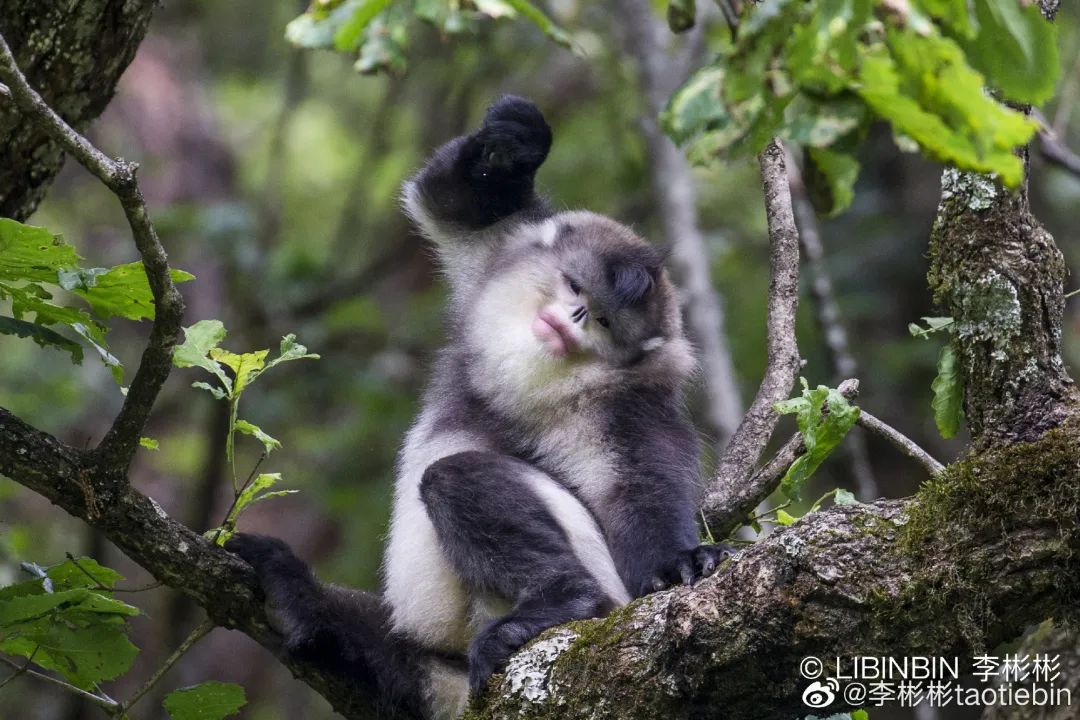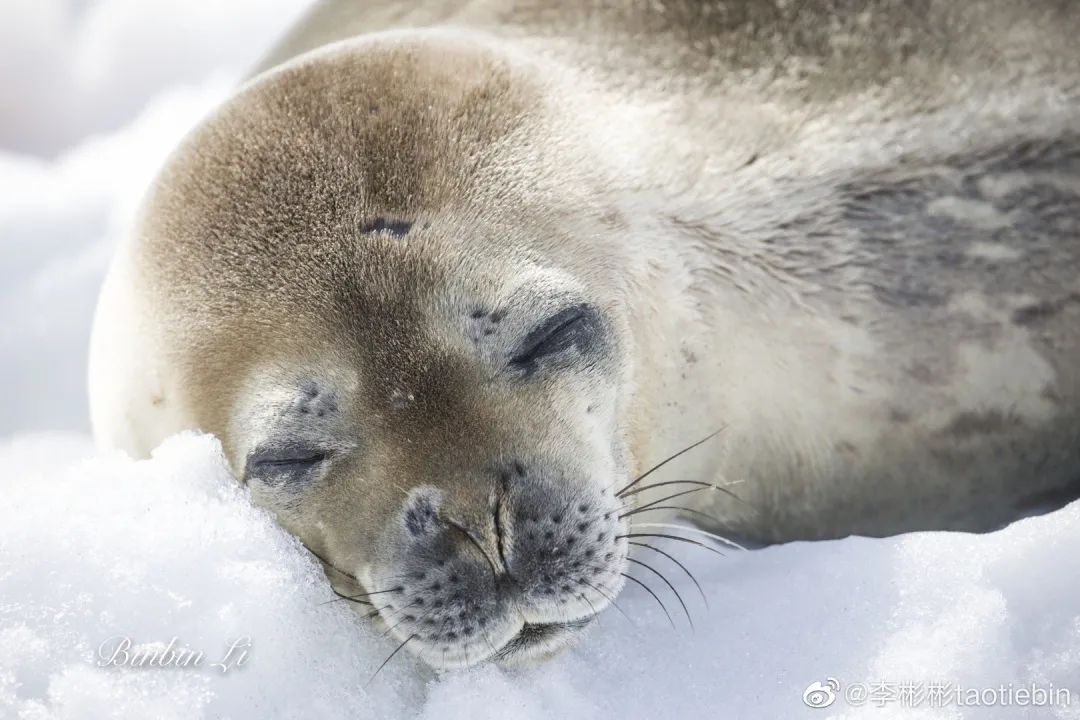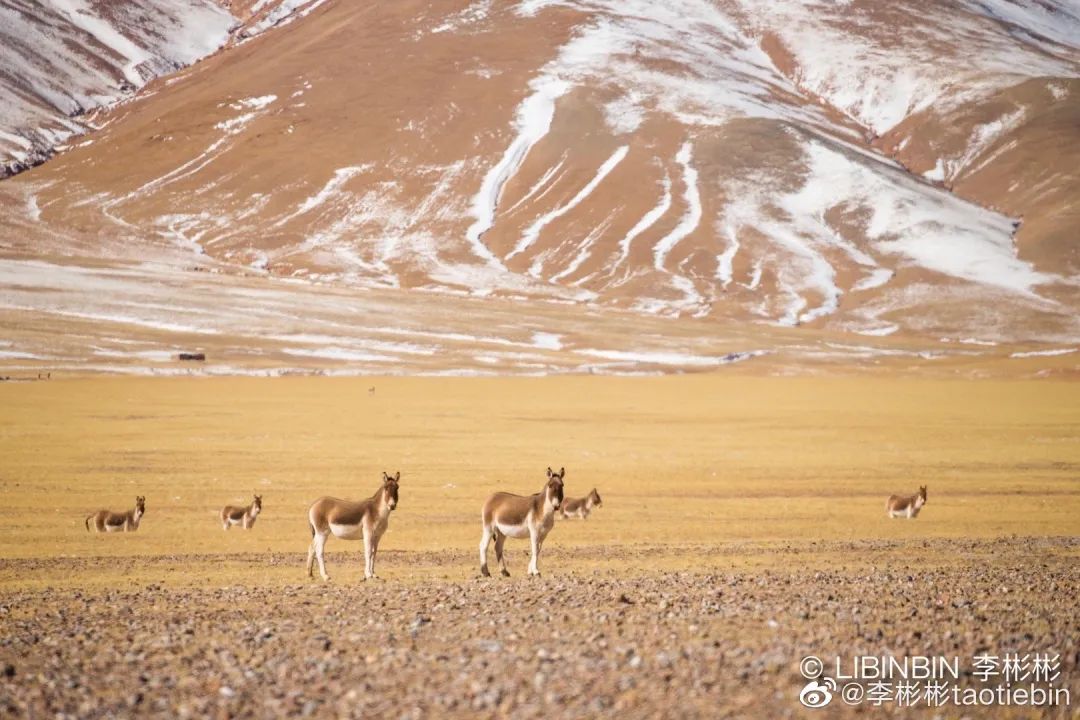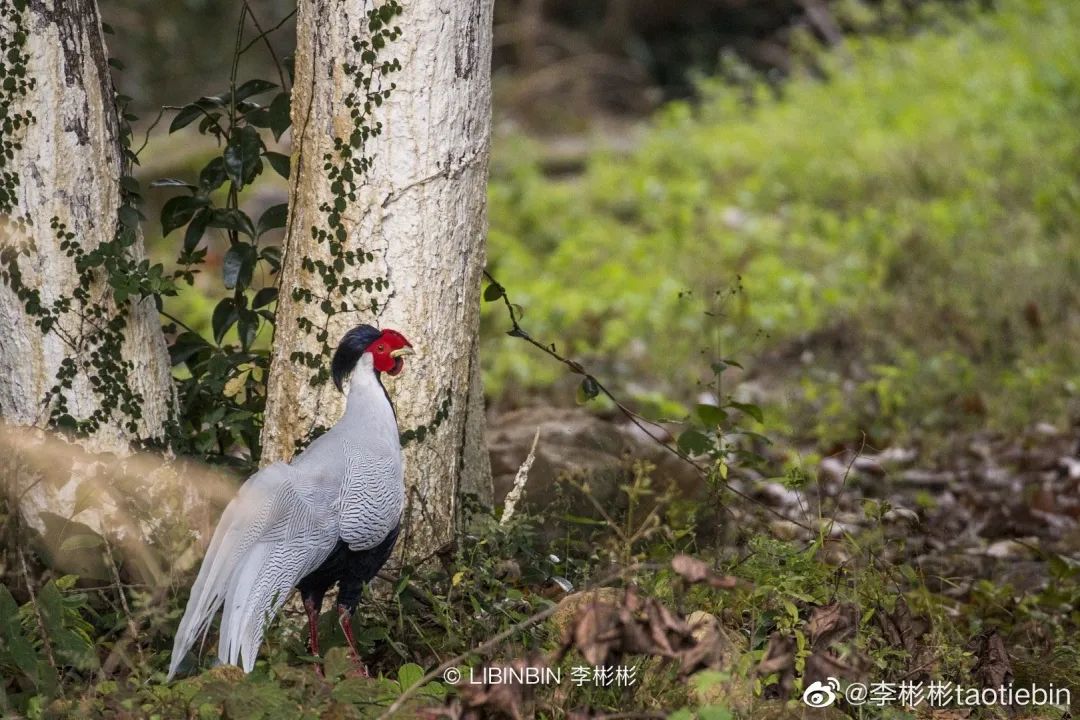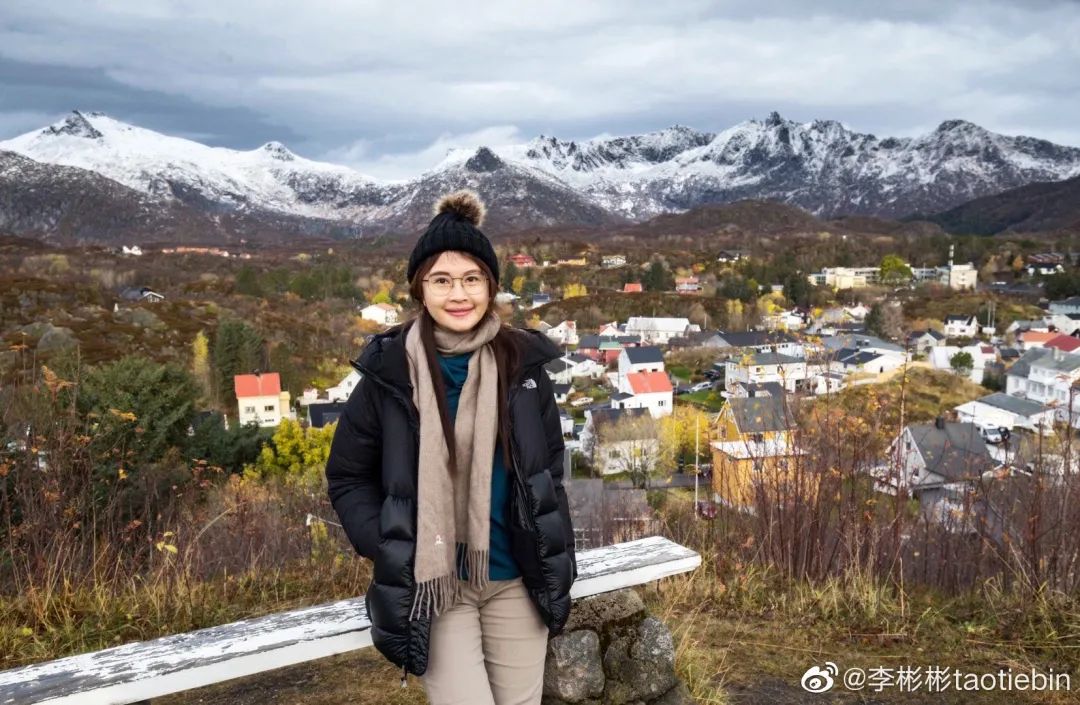
Professor Introduction
Dr. Binbin Li is the Assistant Professor of Environmental Sciences of the Environmental Research Center at Duke Kunshan University. She holds a secondary appointment with Nicholas School of the Environment at Duke University. Dr. Li got her PhD in Environment from Duke University (2017), M.S in Natural Resources and Environment from University of Michigan (2012). and B.S in Life Sciences with a dual degree in Economics from Peking University (2010).
Professor Binbin Li is mainly engaged in conservation biology. Through interdisciplinary ways, she studies the biodiversity protection under the framework of the coupling system of human and nature, and explores the ways of sustainable development. Dr. Li’s work covers the identification of conservation priorities and national parks in China, impacts of One Belt One Road on biodiversity, giant panda conservation and management via Footprint Identification Technique (FIT), impacts of oil palm and rubber plantations on biodiversity in Southeast Asia, influence of national environmental policies on human-wildlife conflicts, and behavioral study of endemic species. She is also a member of the IUCN SSC Small Mammal Specialist Group.
Dr. Li is engaged in science communication and nature education. She is a signed nature photographer at Swild in China. From 2013-2015, she was on the advisory board for Disney nature documentary “Born in China”. She is devoted in using photography, social media, drama, and other art formats to promote conservation science in the public.

Research Team Members
Wu Shuyao, Post-doctoral fellow in Conservation Biology
Wu Shuyao received his Ph.D. in physical geography from Peking University in 2019 and was co-cultivated in Yale University. He received an honorary bachelor’s degree in natural resource conservation science from UBC in 2013 and a master’s degree in forestry and biological sciences from UBC and the Swedish University of Agricultural Sciences in 2015.
Wu’s research interests include ecosystem services, biodiversity and ecosystem resilience, and forest management. He joined Professor Li’s team in October 2019 as a postdoctoral.
Bingkun Jiang, Research Assistant
Bingkun Jiang joined Professor Li’s team as a research assistant in July 2018 and is currently responsible for the grazing threat investigation project in Sichuan and other giant panda reserves. Bingkun Jiang graduated from the Institute of Zoology, Chinese Academy of Sciences, majoring in animal ecology and biodiversity conservation. At present, China’s biodiversity is facing all kinds of threats. He hopes that the work of IMEP laboratory can make some changes.
Siqi Liang, Doctoral Student
Siqi Liang joined Professor Li’s team as a research assistant intern in March 2018, and then became a graduate student and doctoral student of Professor Li. Siqi Liang is currently studying the disturbance of grazing on birds in giant panda habitat and the comparative study on the biodiversity change of Qinling artificial forest and natural secondary forest.
Liang Siqi wanted to be a scientist when she was young. When she was in University, she once thought she wanted to be an ornithologist. It was not until she met Professor Li that she realized that what she wanted to be was actually a conservation biologist who could protect birds. Siqi was also a popular science writer in her leisure time.
Sichong Sun, iMEP Class of 2021
Sichong Sun is a 2nd-year student in iMEP, DKU. He graduated from Southwest University in 2018 with a bachelor’s degree in agriculture. He is a licensed veterinarian with veterinary qualification.
He realized the impacts of environmental problems and factors on wildlife and its living environment, as well as the lack of practitioners concerned about the wildlife benefits. Through the study of Professor Li’s team and environmental policy project, he hopes to further strengthen his understandings on conservation biology and environmental policy-making. He hopes to devote himself to policy-making on conservation biology, especially wildlife protection and rescue, reserve management in the future, with ecology and veterinary medicine knowledge.
Chengxi Li, iMEP Class of 2021
Chengxi Li is a 2nd-year student in iMEP, DKU. She joined Professor Li’s team in October 2019 and participated in the community survey of Liangshan grazing policy’s impacts on giant panda habitat. Chengxi’s current research direction is the impact of ecological protection policies and laws on biodiversity.
In addition, Chengxi also participated in a series of dialogues in Chinese and African Youth in Biodiversity Conservation, and was responsible for the communication with African partners, event design, and preparation.
Dongyuan Ma, iMEP Class of 2022
Dongyuan Ma graduated from school of life sciences, Sichuan University. His home is next to a protected area. He has been exposed to a lot of ecological research work during his undergraduate period, and was attracted by field work.
When he was a sophomore, Dongyuan began to contact people from Professor Li’s laboratory. As a volunteer, he participated in the research on overgrazing in the giant panda habitat, and finally joined the project. He has been trying ecological photography, as well as music and story creation based on his outdoor experience.
Du Hengyu, iMEP Class of 2022
Du Hengyu, a native of Dayi, Chengdu, graduated from University of International Relations, majoring in communication. As a result of his internship in environmental protection NGO during undergraduate period, he inspired his sense of responsibility for environmental protection. After graduation, he studied as a postgraduate in nature reserve of Beijing Forestry University for one year.
Hengyu is trying to explore and broaden his cognitive boundary recently, hoping to find and to realize his personal and social values as soon as possible. He is currently studying piano, occasionally taking and editing videos.
Danyang Shi, DKU undergraduate
Danyang Shi is a junior in the undergraduate program of DKU, majoring in environmental policy. Because of the edification of animal world, she has a strong interest in the protection of wild animals. Meanwhile, she is also interested in public policy, sociology and other social sciences.
After joining B-LAB in January 2019, Danyang has a deeper understanding of biological protection and improved her enthusiasm for this subject. Under the guidance of Professor Li and other members, Danyang took over the “DKU bird collision prevention project”. She hoped that the title of DKU green campus could be worthy of the name.
Shangyi Jiang, DKU undergraduate
Shangyi Jiang is a Shandong girl who grew up in Tianjin. She majored in environmental policy at DKU.
In a volunteer experience as a freshman in University, she first met a gibbon family of three in the wild, and then came up with the idea of wildlife protection and research. The experience of eating and living with local people also made her realize the joy of fieldwork. Since then, every holiday she participated in voluntary activities related to wildlife all over the country, hoping to have a more systematic understanding of ecology and protection through continuous learning.
Qingyu Gan, DKU undergraduate
Qingyu Gan is a sophomore in the undergraduate program of DKU and will study environmental biology. She has been in close contact with nature since she was a child, and has a strong interest in ecological environment and wildlife.
After the environment 101 course taught by Binbin Li, she joined b-lab, and found the academic research direction highly consistent with her interest. Under the guidance of research assistant Bingkun Jiang, Qingyu began to identify the wildlife data collected by infrared cameras in protected areas. In the summer of 2020, she went to the reserve as a volunteer to help collect bird data. All these work made her more firm in her future major choice and helped her accumulate experience for future research work.
Rujia Yang, DKU undergraduate
Rujia Yang is a sophomore at DKU. She plans to major in environmental science and public policy. After studying in DKU, she has a deeper understanding of the relationship between environmental protection, economy, and policy.
After joining B-LAB in January 2019, under the guidance of Professor Li, Rujia participated in a series of projects, such as “DKU bird collision prevention project”, “infrared camera data identification” and so on. She has a broader understanding and a determination on environmental protection on environmental science and public policy.
Shuyue Liao, DKU undergraduate
Shuyue Liao is a sophomore at DKU. His current major is environmental science / biology. She has participated in many bird surveys and other bird research activities in Nanhui wetland, Shanghai.
After joining B-LAB in September 2020, she became one of the core members of “DKU bird collision prevention project” to assist in coordinating the arrangement and processing of bird collision data. She also helped curate the Duke-DKU online environmental art exhibition. In addition, with the help of teachers and other students, she organized and led a bird guide activity on campus.
Previous graduates
Kelley Reardon, iMEP’19
In the summer of 2018, Kelley cooperated with the “Indian Wildlife Research Center” and independently took charge of a cooperative research project by China and Indian as her master’s project. The project focuses on rural communities surrounding protected areas, which are habitats for key species such as Bengal tiger and giant panda. The ultimate goal of the project is to develop a community-based conservation program to reduce human animal conflicts around the reserve.
Kelley is now a lecturer at Verto Education, where she teaches environmental science to freshmen studying abroad in the South Pacific, including climate change in Fiji, renewable energy in New Zealand, marine protection of the Great Barrier Reef in Australia, etc.
Julie Mao, iMEP’19
During her two summers at IMEP, Julie worked as an environmental quality management expert and a natural resources expert at the Department of Energy and the Land Administration, the Department of the Interior, US..
Julie is very interested in environmental health, sustainability, natural resource management and protection, and hopes to participate in relevant work through environmental consultation or global management consultation. She currently works for Scott Madden, a North American consulting firm.
Cui Liu, iMEP‘19
As a graduate student, Cui Liu led a team which successfully got the “youth conservation Leader Award” of BirdLife International, and conducted research on the impacts of grazing on panda habitat in Wanglang, Xuebaoding and Xiaohegou in Pingwu County, Sichuan Province. The experience of collecting field data and carrying out household survey gave her a new understanding of nature conservation: the need to coordinate the protection of ecological environment with the development of community.
After graduation, Cui Liu worked as a project consultant of marine project team in Sustainable Global Environment Institute (GEI) Chaoyang District, Beijing, and is currently in charge of Laohegou Project in the Paradise.
Yan Gao, iMEP’19
During her study in IMEP, Yan Gao participated in two scientific research projects. The first is “the impact of overgrazing on giant panda habitat”. This study includes three aspects: 1) collecting data of livestock disturbance, habitat and animal traces through field survey to quantify the impacts of grazing on giant panda habitat change; 2) community household survey to further understand the social causes of grazing conflict; 3) to determine possible solutions with socio-economic methods In her master’s degree, Yan Gao has participated in the project evaluation of Laohegou community, the impact of understory grazing on panda habitat, and the investigation of Chinese patrolmen. In 2019, he joined the Paradise as international project manager, responsible for international project operation and overseas communication.
Qianzhe Huang, iMEP’19
Huang has always been interested in sustainable development, environmental education and effectiveness evaluation. During her study, she worked as a distance intern in WWF environmental education team and participated in writing a biodiversity education book-Window of the Field (now published).
Qianzhe now works for P&G, designing and implementing industrial carbon neutralization, zero waste, and water resources protection projects. She hopes to promote consumers’ pro environmental behavior, with the power of industry.
Jingjing Xu, iMEP’20
Jingjing Xu’s research direction in postgraduate stage is animal behavior research and protection application. She has cooperated with China Giant Panda Protection and research center and Duke lemur center in two research projects respectively: the impact of livestock traces on the behavior of giant pandas; the comparison of social behavior between captive and non-captive lemurs.
Under the guidance of Professor Binbin Li and Professor kathinka Furst, Jingjing participated in and wrote related articles for the comparative study of the wild animal protection laws between China and other countries, the analysis of illegal wildlife trade, the aquatic wildlife management policies.
At present, Jingjing works in Guangzhou Office of the Wildlife Conservation Society (WCS), in charge of the investigation of illegal wildlife trade.
Miao Hu, iMEP’20
Hu Miao is a master of environmental policy in 2020. She has a wide range of interests in conservation biology, marine conservation, and the management of natural resources and nature reserves.
Hu Miao’s research topics include animal behavior, spatial analysis and application, community development, and management of nature reserves. Her recent research is to investigate the effects of overgrazing on the composition of small mammal communities in panda habitats. With the help of her mentor Professor Binbin Li, they plan to put forward policy suggestions to regulate overgrazing in giant panda habitats. In her spare time, Miao likes to hike and explore new places with her dog.
Ren Cao, iMEP’20
In 2016, Ren Cao graduated from the University of California, San Diego with a Bachelor of Arts Degree in Comparative Political Science. In 2018, he graduated from the American University of Rome with a master’s degree in food research.
Under the guidance of Professor Binbin Li, Ren Cao’s master thesis focus on the impact of railway infrastructure on forest cover in China. As a train enthusiast for a long time, he can combine his knowledge of China’s railway system with the method of geospatial analysis to carry out research, which makes him feel excited. His research interests include geospatial analysis, land use, human nature interaction and landscape ecology.
Ren Cao is currently studying for a joint PhD in geography program by San Diego State University and the University of California, Santa Barbara.
Zi’an Wang, iMEP’20
In One Belt One Road background, China’s public transport system has a potential impacts on forests; how forest reserves and other policies alleviate forest degradation to some extent; the complex impacts of plantations on biodiversity.
Zian also has many interests, including the application of statistics, economics, and GIS tools to achieve more efficient scientific analysis.
Volunteers
In the processes of field researches and indoor researches, many excellent volunteers have been or are participating in the laboratory work. Those volunteers have made essential contributions to the researches.
Miaomiao Liang, Mengshuai Ge, Zhijun Ding, Feipeng Huang, Qiao Wei, Yinan Ding , Jia Han and other students participated in the indoor data collection and analysis. Xiang Zhao, Ying Zhou, Yuhang Liang, Xiaoran Yang, Ying Yue, Ruifeng Wu, Yidan Lai and other students participated in the arduous field survey.
Among them, some volunteers have determined their ambition to engage in ecological protection. More volunteers have successfully applied for the IMEP program after participating in the project, so as to further carry out relevant researches.
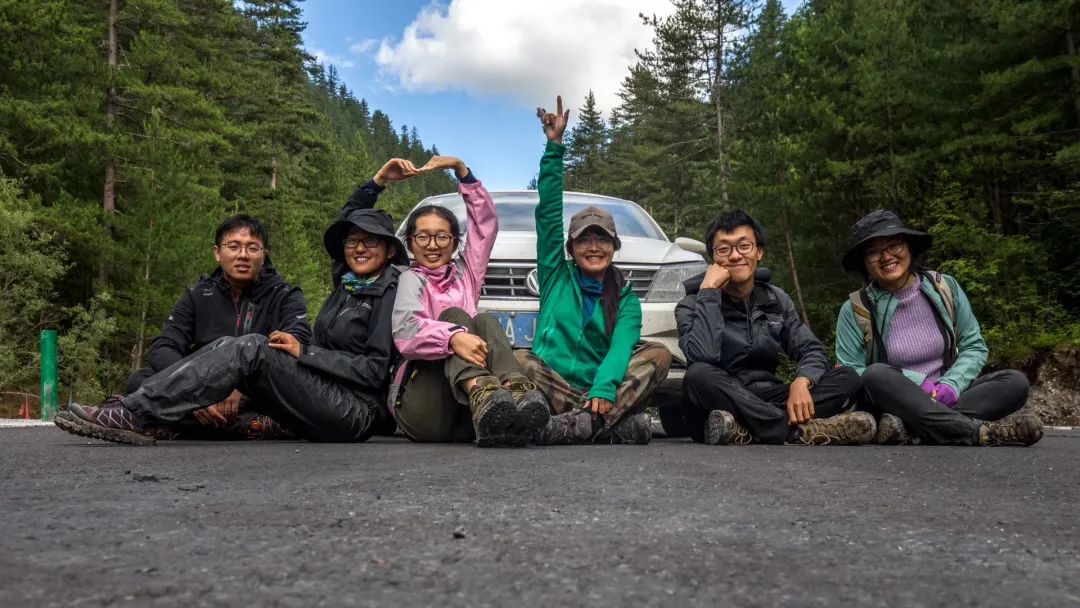
B-lab research topics
Planning and management of conservation priority areas
1. Hemispheric plan and wilderness
2. Protected areas, public welfare protected areas and national parks
3. Sustainable livelihood of surrounding communities
Case study:
Is there a win-win situation for biodiversity conservation and community development?
1) What is the global pattern of the relationship between the nature reserve and its surrounding communities?
2) Are the types of relationships different due to different social economy and ecological environment?
3) What is the most important factor that determines the type of relationship?
Protection of endangered and endemic species
1. Grazing in the habitats of Chinese giant panda and Indian Bengal tiger
2. The impact of plantation on biodiversity
3. Corridor construction and evaluation
Case study:
Impacts of grazing on biodiversity and local sustainable livelihood strategies
1) In the panda habitats, field ecological data collection, spatial model construction, and socio-economic Investigation and analysis were used to quantify the impact of main livestock types on different biological groups and community composition, and determine the sustainable grazing form and management mode.
2) quantify the impact of global grazing on Forest Ecosystems by meta analysis
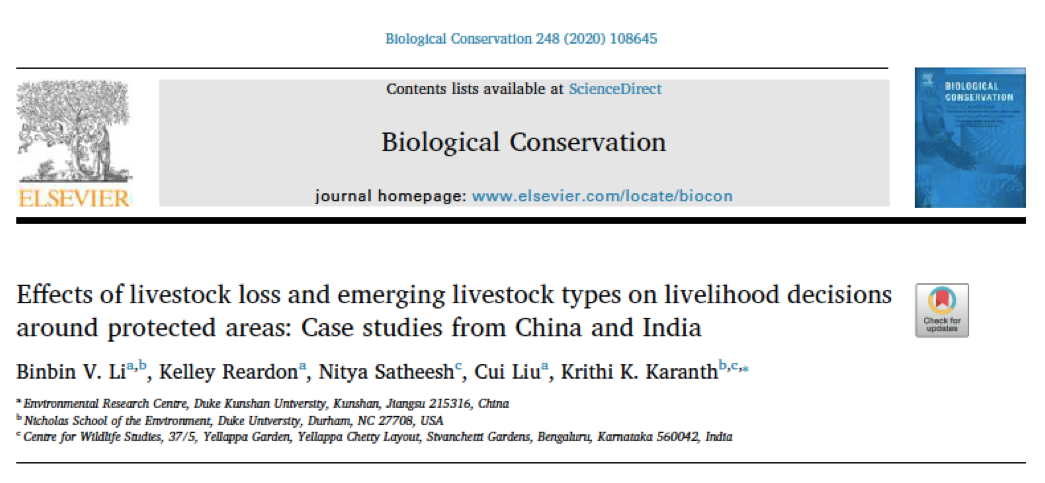
Impact of One Belt One Road on biodiversity along the route
1. Impact of road construction
2. Financial instruments for spatial risk assessment
Case study:
Planning of infrastructure along the “One Belt One Road”
1) Road brings not only social and economic benefits, but also ecological and environmental impacts
2) reviewed the One Belt One Road country’s linear infrastructure projects and their environmental impact assessment procedures.
3) A road planning strategy based on 14 criteria and minimum cost path analysis is proposed to minimize the ecological and environmental impacts and to maximize the social, economic and environmental benefits of the road
4) Application case study of Sri Lanka
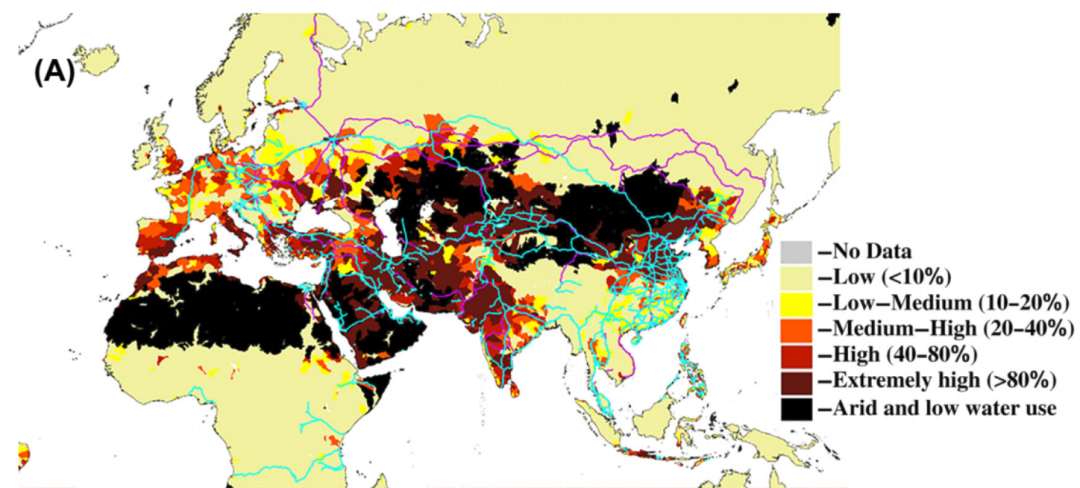
Nature based solutions
1. Biodiversity protection and public health
2. Forest protection and human health
3. Protect finance and promote science and technology
Case study:
Analyze the biodiversity related laws of different countries in the world to provide references for China’s legal and policy reform. The cost-benefit analysis of biodiversity and natural ecosystem protection was carried out to determine the probability and economic benefits of reducing a pandemic similar to covid-19 by reducing deforestation and wildlife trade.
Courses taught by Dr. Binbin Li at IMEP
ENVIRON 759K:Environmental GIS
Geographic Information Systems (GIS) is a computer-based tool that uses spatial data to analyze and solve problems. This course introduces students to the core concepts and latest applications of GIS in the field of environment, and gives an in-depth overview of the key data types (raster and vector files), data acquisition, data input, data management, data analysis, and ArcGIS output. This course will also introduce the application of GIS in solving practical problems, such as the prediction of species habitat distribution and conservation planning. Students will be exposed to Google Earth, QGIS and other open source GIS tools.
ENVIRON718K:Environmental Sciences
This course introduces students to the core concepts and topics of environmental sciences. It will give an in-depth overview of main themes in the field of environmental studies: global environmental challenges, human population trends, global atmospheric changes, air, land and water resources and pollution, the ocean and fisheries, key ecosystems (forests, grasslands, wetlands, freshwater and marine environment), biodiversity and conservation, non-renewable and renewable energy, agriculture and sustainable production. Quantitative and qualitative research methods will be introduced with case studies. Students will explore the interventions, technology and management tools for these related issues.
ENVIRON602K:Natural Resources and Protected Area Management
Natural resources and protected area management requires a certain suite of skills including wildlife monitoring, environmental change tracking, socio-economic survey and stakeholders engagement. This course combines in class learning for essential survey methods and experiential education through a 7-day field course (in Sichuan Province panda habitat or Sanjiangyuan national park in Qinghai) at the end of spring semester. Students will design their own group project to carry out in the local context. The project aims to practice the survey methods that students have learned in the lectures and answer a specific question related to natural resources and protected area management. Through the course, students could master the toolkit for practical natural resources management and understand the challenges involved in protected area management.
Publications
Li. B.V. and Pimm S.L. (2020). How China expanded its protected areas to conserve biodiversity. Current Biology, 30(22), R1334-R1340.
Teo H.C., Campos-Arceiz A, Li B.V., Wu M, Lechner A.M., 2020. Building a green Belt and Road: a systematic review and comparative assessment of the Chinese and English-language literature. PLoS One, 15(9), e0239009.
Li, B. V., Reardon, K., Satheesh, N., Liu, C., & Karanth, K. K. (2020). Effects of livestock loss and emerging livestock types on livelihood decisions around protected areas: Case studies from China and India. Biological Conservation, 248, 108645.
Dobson A.P., Pimm S.L., Hannah L, Kaufman L., Ahumada JA., Ando AW, Bernstein A., Busch J., Daszak P., Engelmann J., Kinnaird M., Li B.V., Loch-Temzelides T., Lovejoy T., Nowak K., Roehrdanz,P. and Vale MM. (2020). Ecology and Economics for Pandemic Prevention. Science, July 24, 2020. DOI: 10.1126/science.abc3189.
Li B.V. (2020) Creating synergy between biodiversity conservation and human health—One Health. Biodiversity Science, 28, 596‒605. (in Chinese with English abstract) [李彬彬 (2020) 推进生物多样性保护与人类健康的共同发展 ——One Health. 生物多样性 , 28, 596‒605.]
Shi XY, Zhang XC, Xiao LY, Li B.V., Liu JM, Yang FY, Zhao X, Cheng C, Lü Z (2020) Public perception of wildlife consumption and trade during the COVID-19 outbreak. Biodiversity Science, 28, 630‒643. (in Chinese with English abstract) [史湘莹, 张晓川, 肖凌云, 李彬彬, 刘金梅, 杨方义, 赵翔, 程琛, 吕植 (2020) 新冠肺炎时期公众对野生动物消费和贸易意愿的调查. 生物多样性, 28, 630‒643.]
Fan, F., Bu, H., McShea, W. J., Shen, X., Li, B. V., & Li, S. (2020). Seasonal habitat use and activity patterns of blood pheasant Ithaginis cruentusbe in the presence of free-ranging livestock. Global Ecology and Conservation, e01155.
Ng, L. S., Campos-Arceiz, A., Sloan, S., Hughes, A. C., Tiang, D. C. F., Li, B. V., & Lechner, A. M. (2020). The scale of biodiversity impacts of the Belt and Road Initiative in Southeast Asia. Biological Conservation, 248, 108691.
Li, B. V. (2020). Conservation: Guarding Panda Land. Current Biology, 30(7), R302-R304.
Hughes A.C., Lechner AM, Chitov A, Horstmann A, Hinsley A, Tritto A, Chariton A, Li B.V., Ganapin D, Simonov E, Morton K. 2020. Horizon Scan of the Belt and Road Initiative. Trends in Ecology & Evolution. https://doi.org/10.1016/j.tree.2020.02.005
Zhang L., Pacifici M., Li B.V., Gibson L. (2020). Vulnerability among China’s ungulates and mitigation offered by protected areas. Conservation Science and Practice, 2(4), e177.
Liang, Z., Wang, Y., Huang, J., Wei, F., Wu, S., Shen, J.S., Sun, F.Y., Li, S. (2020). Seasonal and diurnal variations in the relationships between urban form and urban heat island effect. Energies, 13: 5909.
Liang, Z., Wu, S., Wang, Y., Wei, F., Huang, J., Shen, J., Li, S. 2020. The relationship between urban form and heat island intensity along the urban development gradients. Science of the Total Environment, 708: 135011.
Li, D., Wu, S., Liang, Z., Li, S. 2020. The impacts of urbanization and climate change on urban vegetation dynamics in China. Urban Forestry & Urban Greening, 54: 126764.
Shen, J., Li, S., Liang, Z., Liu, L., Li, D., Wu, S. 2020. Exploring the heterogeneity and nonlinearity of trade-offs and synergies among ecosystem services bundles in the Beijing-Tianjin-Hebei urban agglomeration. Ecosystem Services, 43: 101103.
Shen, J. Li, S., Liu, L., Liang, Z., Wang, Y., Wang, H., Wu, S. 2020. Uncovering the relationships between ecosystem services and social-ecological drivers at different spatial scales in the Beijing-Tianjin-Hebei region. Journal of Cleaner Production, Accepted.
B. V. Li, Alibhai, S., Jewell, Z., D. Li, & H. Zhang. “Using footprints to identify and sex giant pandas”. Biological conservation, pp. 83-90, 2018
Pimm, S. L., Clinton N. Jenkins, and B. V. Li. “How to protect half of Earth to ensure it protects sufficient biodiversity”. Science advances, pp. eaat2616, 2018
B. V. Li, Pimm, S. L., S. Li, L. Zhao, & C. Luo. “Free-ranging livestock threaten the long-term survival of giant pandas”. Biological conservation, pp. 18-25, 2017
Pimm, S. L., Harris, G., Jenkins, C. N., Ocampo‐Peñuela, N., & B. V. Li. “Unfulfilled promise of data‐driven approaches: response to Peterson et al”. Conservation Biology, pp. 944-947, 2017
Belasen, A., Brock, K., B. V. Li, Chremou, D., Valakos, E., Pafilis, P. & Foufopoulos, J., “Fine with heat, problems with water: microclimate alters water loss in a thermally adapted insular lizard”. Oikos, pp. 447-457, 2017
Li, B.V., Alibhai, S., Jewell, Z.,* Li, D. & Zhang, H. (2017) Using footprints to identify and sex giant pandas. Biological Conservation 218:83-90.
Ocampo-Peñuela, N., Jenkins, C. N, Vijay, V., Li, B.V., & Pimm., S.L. (2016) Incorporating explicit geospatial data shows more species at risk of extinction than the current Red List. Science Advances, 2(11), e1601367.
Li, B. V., Hughs, A., Jenkins, C. N, Ocampo-Peñuela, N. & Pimm., S.L. (2016) Remotely sensed data informs Red List evaluations and priorities mountainous areas for endemism conservation in Southeast Asia. PLoS ONE 11(8): e0160566. doi:10.1371/journal.pone.0160566.
Li, B. V., & Pimm, S. L. (2015). China’s endemic vertebrates sheltering under the protective umbrella of the giant panda. Conservation Biology. DOI: 10.1111/cobi.12618
Li, B., Belasen, A., Pafilis, P., Bednekoff, P., & Foufopoulos, J. (2014). Effects of feral cats on the evolution of anti-predator behaviours in island reptiles: insights from an ancient introduction. Proceedings of the Royal Society of London B: Biological Sciences, 281(1788), 20140339.
Li, B., Belasen, A. and Foufopoulos, J. (2012) Geographic distribution: Chalcides ocellatus. Herpetol Rev. 43(1): 102.
Li, B. 2011. “Procapra przewalskii” (On-line), Animal Diversity Web. Accessed at http://animaldiversity.ummz.umich.edu/site/accounts/information/Procapra_przewalskii.html



